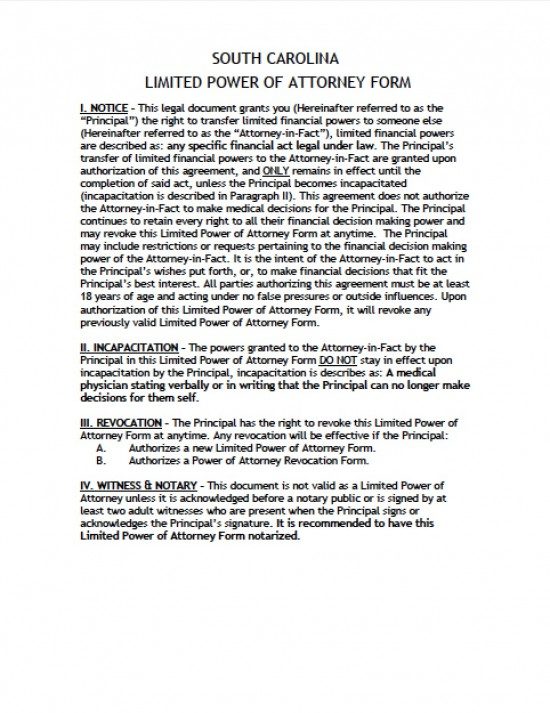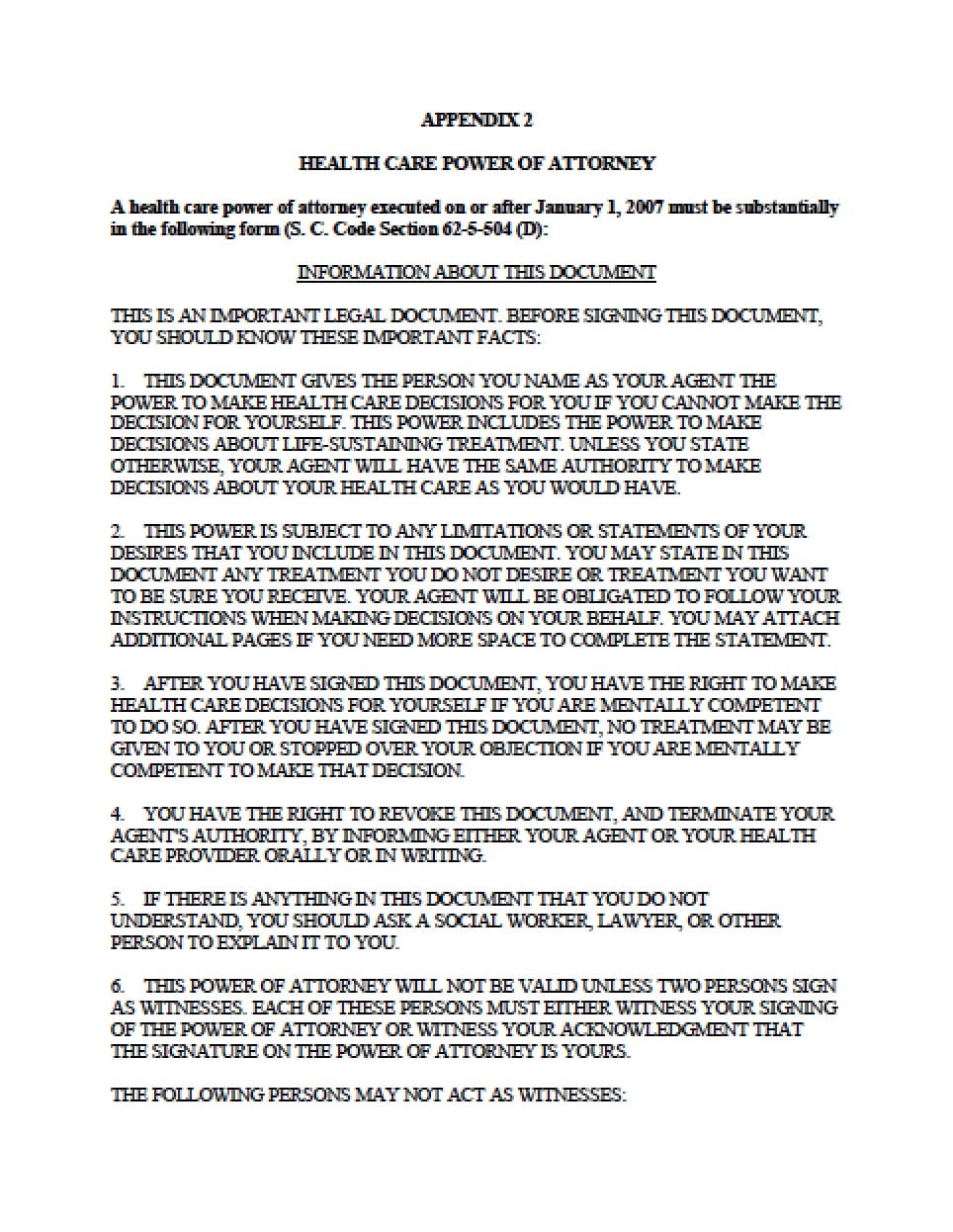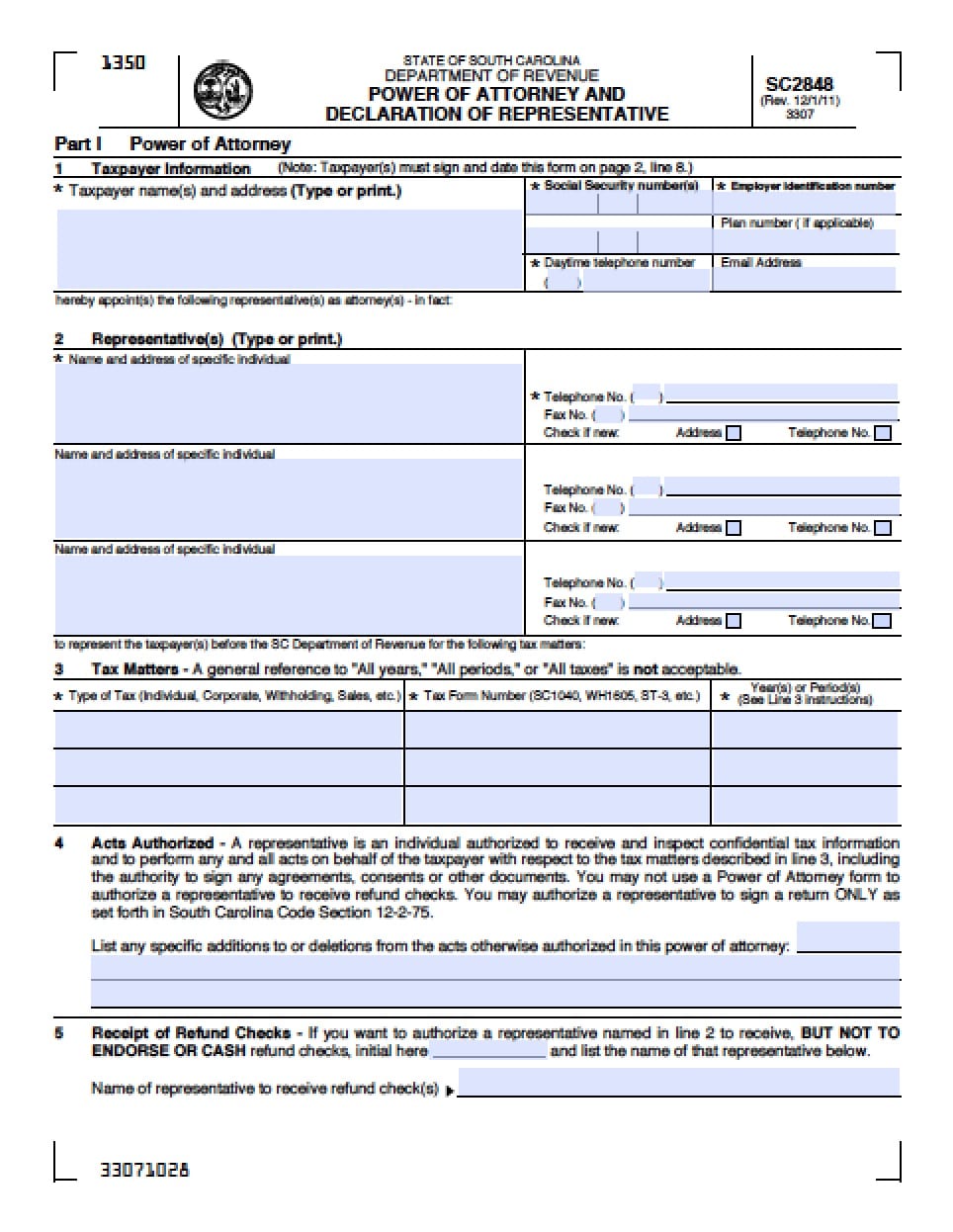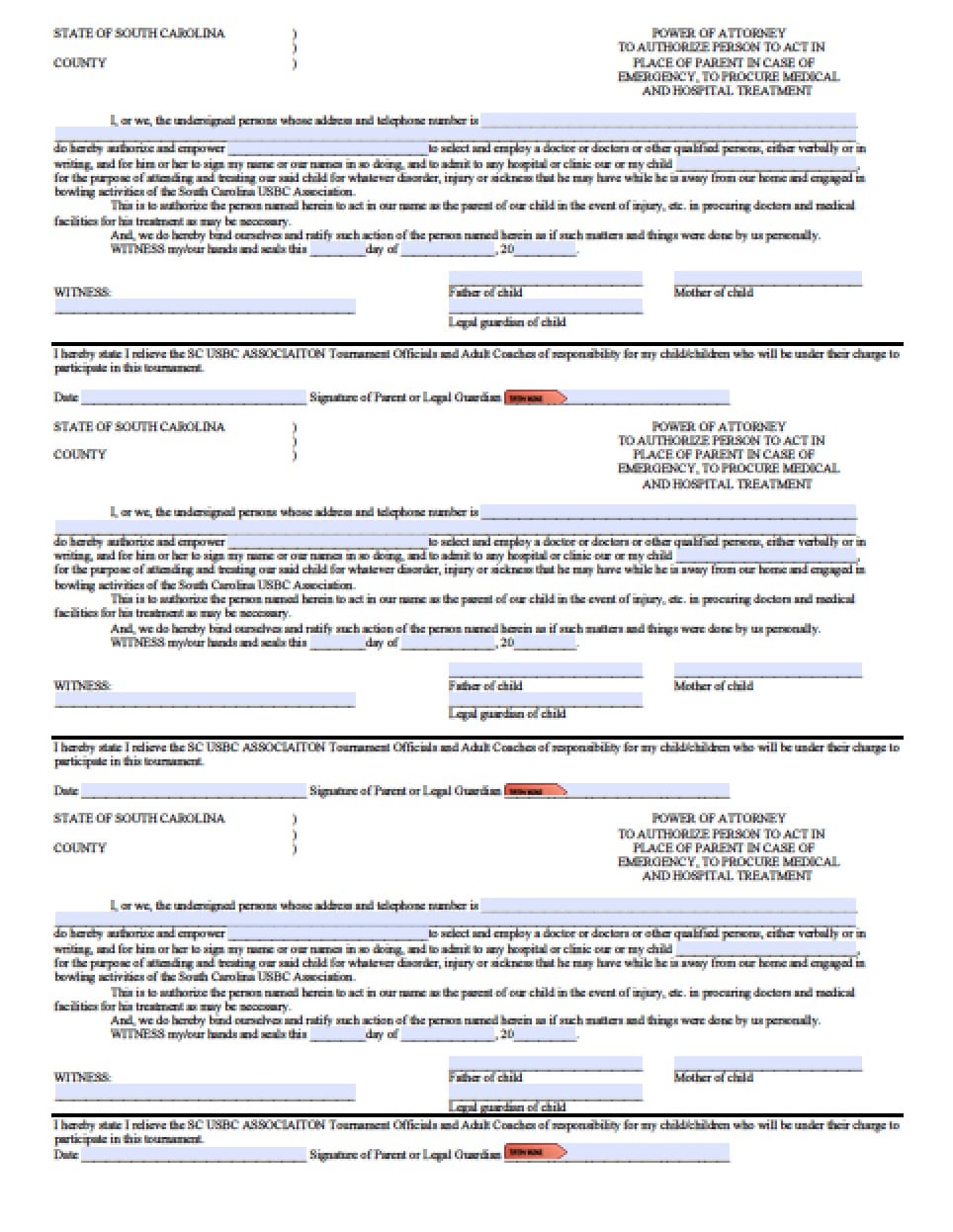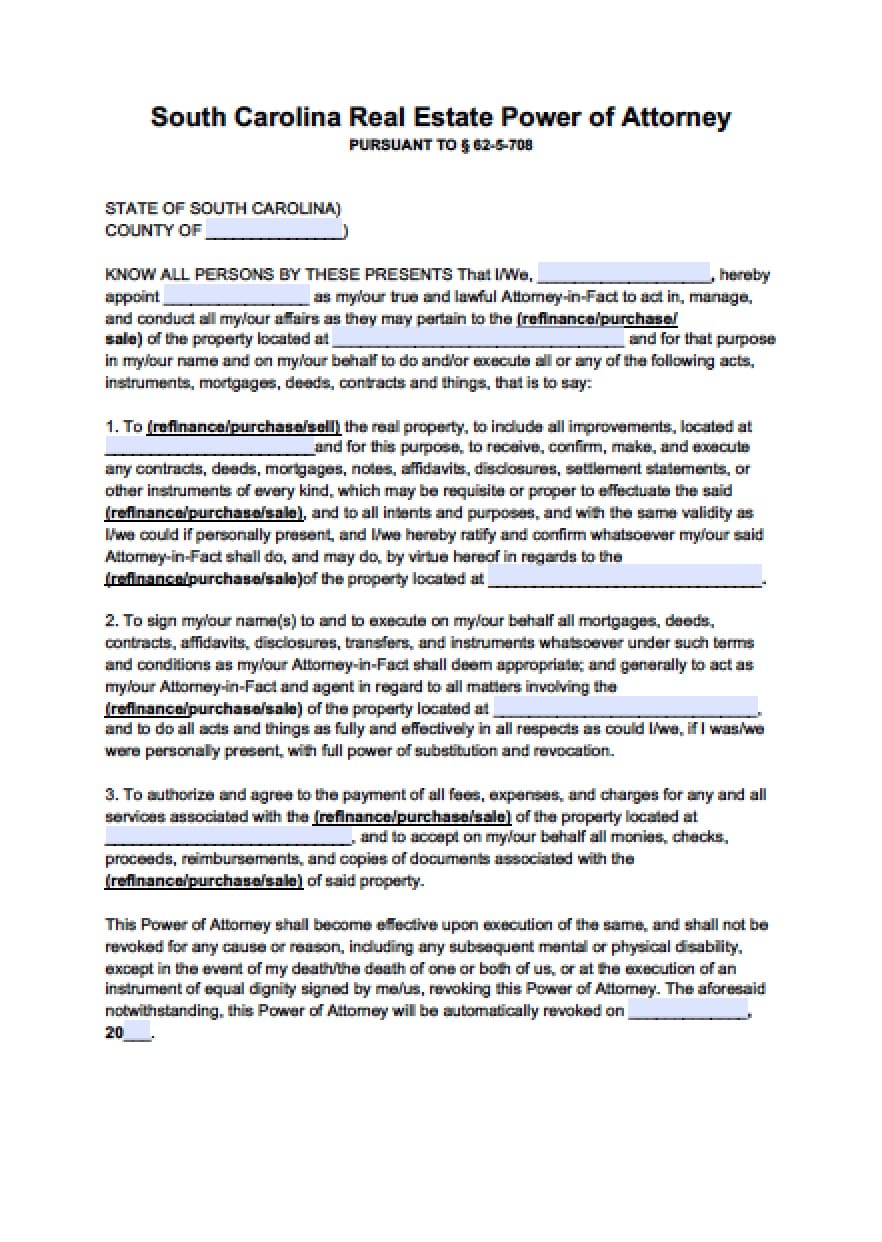 | South Carolina Limited (Special) Power of Attorney Form |
The South Carolina limited (special) power of attorney form is a legal document that allows a Principal to appoint an Agent to act on their behalf for the purposes of managing property or business affairs. Unlike a general POA, a limited (special) POA gives the Agent a finite range of authority which may be terminated after a specific duty has been performed or once a fixed time frame has passed.
The form must be signed by the Principal, or by another individual in the Principal’s presence and who is directed by the Principal to sign the Principal’s name if he/she is physically unable to do so. The signature must also be acknowledged before a Notary Public and two witnesses (SC Code § 62-8-105).
How to Write
Step 1 – Notice to Principal – Read the following information:
- Notice
- Incapacitation
- Revocation
- Witness and Notary
Step 2 – The Parties – Enter the following information:
- The Name of the Principal
- Street Address
- City
- State
- AND
- The Name of the Agent
- Street Address
- City
- State
- Enter the state wherethe powers will be exercised by the Agent
- AND
- The Name of the Successor Agent (optional)
- Their Street Address
- City
- State
- Enter the state where the powers document shall be used by the Agent
- The Principal must carefully review the document’s Terms and Conditions
Step 3 – Granting of Powers – The Principal shall read and consider the list of powers provided. Should the Principal opt to grant any specific power, enter their initials, if they decide not to provide power to any of the power,then place an “X” in the preceding line– Review the following powers:
- (A) Real property transactions
- (B) Tangible personal property transactions
- (C) Stock and bond transactions
- (D) Commodity and option transactions
- (E) Banking and other financial institution transactions
- (F) Business operating transactions
- (G) Insurance and annuity transactions
- (H) Estate, trust, and other beneficiary transactions
- (I) Claims and litigation
- (J) Personal and family maintenance
- (K) Benefits from Social Security, Medicare, Medicaid, or other governmental programs, or military service
- (L) Retirement plan transactions
- (M) Tax matters
Step 4 – Additional Titles – The Principal must review the following:
- Third Parties
- Compensation
- Disclosure
Step 5 – Signatures – Notary Public presence required:
- Printed name of the Principal
- Date the signature in dd/mm format
- The Principal’s Signature
- AND
- The printed name of the Agent
- The Agent’s Signature
- Date the signature in mm/dd/yyyy format
- AND
- Submit the printed name of the Successor Agent (optional)
- The Successor Agent’s signature
- Date the Successor’s signature in mm/dd/yyyy format
Step 6 – Notary Acknowledgement –
When the notary witnesses all signatures, they shall then have the ability to acknowledge the document by entering all of the information required by the state, to acknowledge the validity of the document
Step 7 – Acknowledgement and Acceptance of Appointment as Agent and Successor Agent –
- Each Agent must read their acceptance information
- Enter the name of the Agents within their respective paragraphs
- Provide Agents signatures
- Date the signatures in mm/dd/yyyy formats
Step 8 – Witness Attestation – The witnesses shall review the attestation paragraph – Submit the following:
- Witnesses must enter their printed names
- Each witness shall provide their signatures
